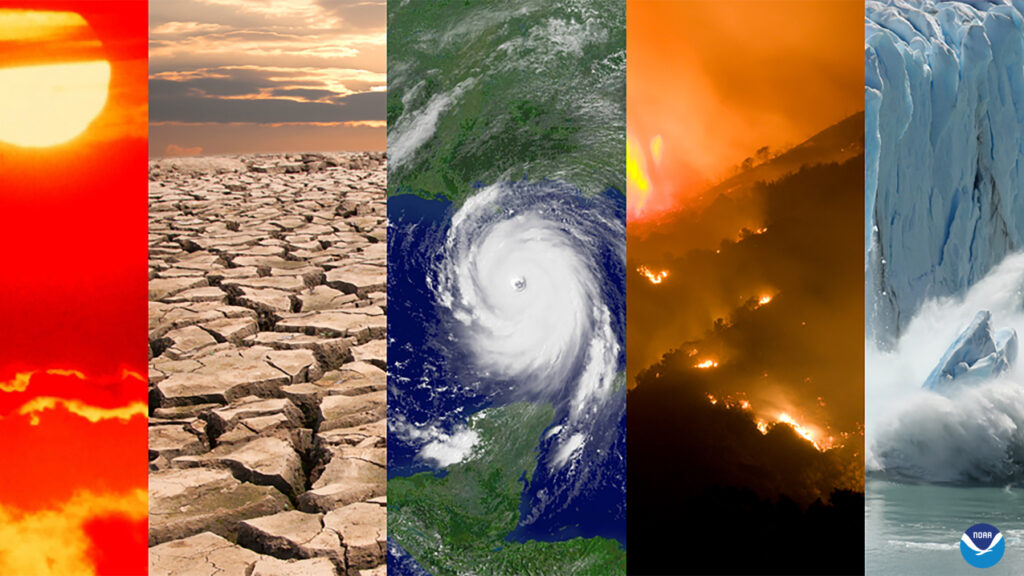We all know global warming is real, but what does that mean? What are the symptoms of global warming? How can we prevent it? This article will discuss how global warming affects our world today, including which parts of the world are weak and how even something as simple as your daily driving can lead to dangerous climate change. So get ready to double your wisdom because the wisdom you will get here will not found elsewere.
5 Crucial Ways Are Written Down
1) The Polar Vortex
The polar vortex has been affecting the United States in a big way. It’s chilling temperatures to dangerous levels, forcing schools and businesses to close. But the polar vortex is only one of many issues that global warming has caused or will continue to cause.
The following are effective ways global warming is affecting our world today.
A rise in average sea level: Scientists predict that by 2100, the sea level will rise around 30-70 centimetres. That may not seem considerable, but it could affect hundreds of millions living near coastlines.
Warmer oceans and ice caps: Some scientists predict that melting ice caps would cause an increase in ocean water temperature, which could lead to severe weather events like hurricanes, typhoons, and cyclones. And these changes can’t just be anticipated for this century; they’ve already happened with increased frequency over the past decade.
More heatwaves: Last year was one of the hottest years, and eight new heat records have been set so far this year. Heatwaves have led to wildfires and droughts, which have killed crops and destroyed animal habitats.
Melting permafrost: Permafrost acts as a buffer against climate change by storing CO2 from decomposing organic matter inside its frozen layers. But as permafrost melts due to global warming, more carbon dioxide gets released into the atmosphere, exacerbating the problem even further!
While there are some positive outcomes from global warming (more greenery!), there are still many negatives we need to keep in mind before it’s too late!
2) Storms and Hurricanes
One of the more apparent effects of climate change can be seen in the recent increase in extreme weather. In particular, there has been a dramatic rise in hurricanes and typhoons. According to NASA, there were 18 named storms from 1980-1989, 27 from 1990-1999, 43 from 2000-2009, and 71 from 2010-2018. It does not include those that were too small to get a name but still caused damage.
There have also been an alarming number of storms that forecasters didn’t predict before landfall. For example, the strongest storm on record was Hurricane Patricia in 2015, with sustained winds reaching 200 mph. It made landfall in Mexico as a Category 5 storm with gusts up to 165 mph, resulting in thousands of deaths and damages.
These catastrophic weather events occur because warmer air holds more moisture than cooler air, allowing for increased rainfall levels, floods, intense heat waves, droughts, wildfires, and other disasters worldwide.
3) Wildfires and Droughts
Wildfires in the Western United States include been happening more frequently over the last few years. This summer alone, there have been over 4,500 fires that have burned more than 1.3 million acres of land. At the same time, droughts in many parts of the world have made it harder for people to grow crops and find clean water.
Droughts also affect animals in desert regions as they can’t find enough water to survive on their own. However, humans will feel this effect the most because we need water to drink and food to eat. Water supplies will run out faster when there isn’t enough rain, which leads to a shortage. In addition, higher temperatures mean less food production, so hunger becomes an issue too. There’s even a chance that wars could break out due to the lack of resources caused by climate change.
One way to help curb global warming is to reduce our carbon emissions by turning off lights when not in use or driving less! We can make small changes like these to help keep the Earth cleaner for future generations. Here are five ways global warming is already impacting the world today:
4) Rising Sea Levels
Rising sea levels and ocean acidification, which occur when seawater absorbs the carbon dioxide in the atmosphere, affect coastal communities worldwide. As sea levels rise, coastal communities that have been home to people for generations are at risk of submerging. This phenomenon will most affect communities in low-lying areas around the world.
It’s more than just coastal communities at risk of rising sea levels. Animals and plants in terrestrial and marine habitats are also being impacted by global warming. Unfortunately, we don’t have any solutions for reversing or slowing down global warming, but there are steps you can take to confirm it doesn’t get worse. The good news is that these changes won’t impact your lifestyle negatively – in fact, many of them will save you money on energy costs.
If you want to help slow global warming, one easy way is by driving less. For every mile driven, using akternate mode of transportation, such as walking or biking, CO2 emissions are reduced by 10 pounds. Another easy thing you can do is get rid of your old incandescent light bulbs! These old light bulbs create a lot more heat and use up to 25% more electricity than their newer counterparts.
And the next time you need something from the store, consider bringing a reusable shopping bag! Incorporating small changes like these into your daily routine may seem insignificant, but they add up! Remember that every little bit counts!
5) Animal Migration Patterns
Animals are known for their ability to adapt quickly to changing environmental conditions. While some animals may not be capable of moving as fast, others are better at adapting and finding new food sources.
However, the rapid increase in global temperatures means that many animals cannot find their old habitats because they’ve been wiped out or are too hot now. As a result, many animals have had to migrate to find cooler climates.
1) In Alaska and Canada, more caribou herds have begun migrating north as traditional winter ranges have become less hospitable because of permafrost thawing.
2) In Australia, koalas in southern regions have moved inland after tree cover has decreased due to drought and wildfires.
3) Sea lions off California’s coast have also travelled further north, with researchers believing this is due to warmer water temperatures altering the marine ecosystem.
4) Many bird species in North America have seen declines, especially those that rely on insects and other invertebrates, which are declining in abundance.
5) The pine beetle epidemic is affecting forests across Western North America. The beetles feed on host trees until they eventually die, leading to dry forest conditions that can increase fire risk.
The Conclusion
Global warming significantly impacts the environment, our lifestyles, and the economy. As a result, we need to do more to preserve our earth. If you want to read more about global warming, consider these five things that global warming is doing to our world today.
Destroying natural habitats: As the earth warms up, many animals are being forced out of their natural habitats and into other regions where they don’t belong. It can be seen in how white-tailed deer invade California while polar bears move towards northern Canada because they can no longer survive in their habitat. Animals can also not find food or shelter as quickly as before, so we must help them in any way we can!
Increasing temperatures: There’s no denying that the average temperature around the world has increased by an alarming amount over the past few decades. It’s been projected that temperatures will continue growing as long as there is carbon dioxide in the atmosphere. To learn more about what this means for us, take a look at our blog post: The Effect of Climate Change.
Causing extreme weather conditions: Some scientists think climate change is making it harder for people worldwide to predict how severe their local weather patterns will be.









